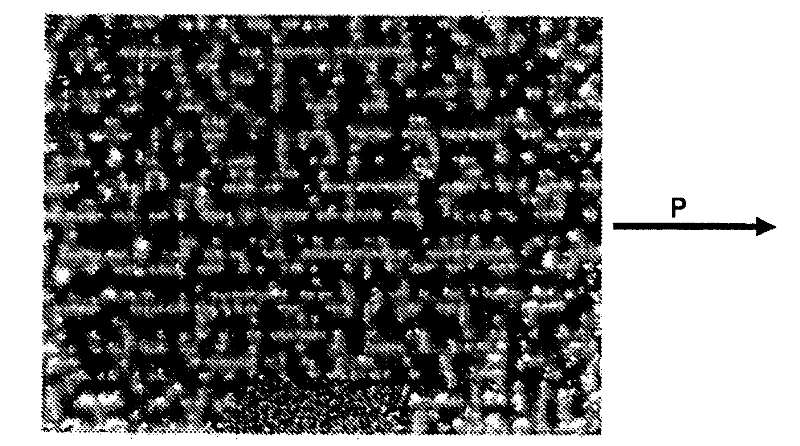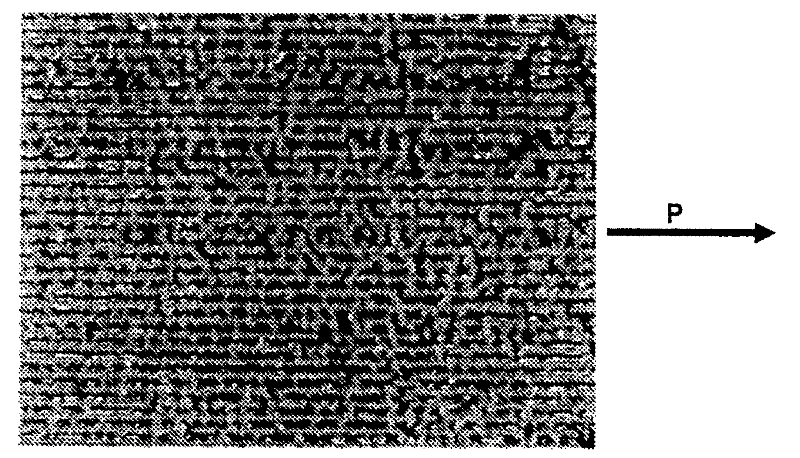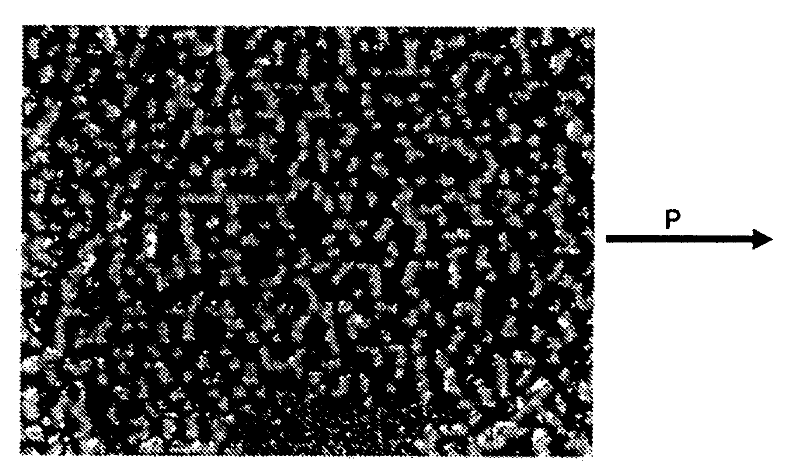Method of preventing the formation of inkjet printing artefacts
An inkjet printer, printing direction technology, applied in printing and other directions, can solve the problems of reducing the total production volume, reducing the production volume, complicated reasons, etc., to achieve the effect of reducing implementation time, reducing costs, and overcoming image defects
- Summary
- Abstract
- Description
- Claims
- Application Information
AI Technical Summary
Problems solved by technology
Method used
Image
Examples
Embodiment Construction
[0038] The present invention solves the problem of chain formation by reducing the size of certain selected droplets within the printed pattern, thereby inhibiting coalescence on the substrate. Figure 5 shows a magnified image of a print made with UV-curable ink, where the artifacts in question are clearly visible. The printing direction P is from left to right; the chains formed in the image are evident at this magnification and will be perceptible at normal viewing distances. Figure 6 shows a similar printed image at higher magnification showing the horizontally extending chains in more detail. Figure 7 A print image showing the same print data as in FIG. 6, which is printed according to the present invention. The effect of using the present invention is clearly visible, the merging of droplets is now substantially isotropic, thus eliminating chain artifacts.
[0039] Figures 8 and 9 show, respectively, the theoretical droplet deposition for a single nozzle (N1) printing c...
PUM
 Login to View More
Login to View More Abstract
Description
Claims
Application Information
 Login to View More
Login to View More - R&D Engineer
- R&D Manager
- IP Professional
- Industry Leading Data Capabilities
- Powerful AI technology
- Patent DNA Extraction
Browse by: Latest US Patents, China's latest patents, Technical Efficacy Thesaurus, Application Domain, Technology Topic, Popular Technical Reports.
© 2024 PatSnap. All rights reserved.Legal|Privacy policy|Modern Slavery Act Transparency Statement|Sitemap|About US| Contact US: help@patsnap.com










